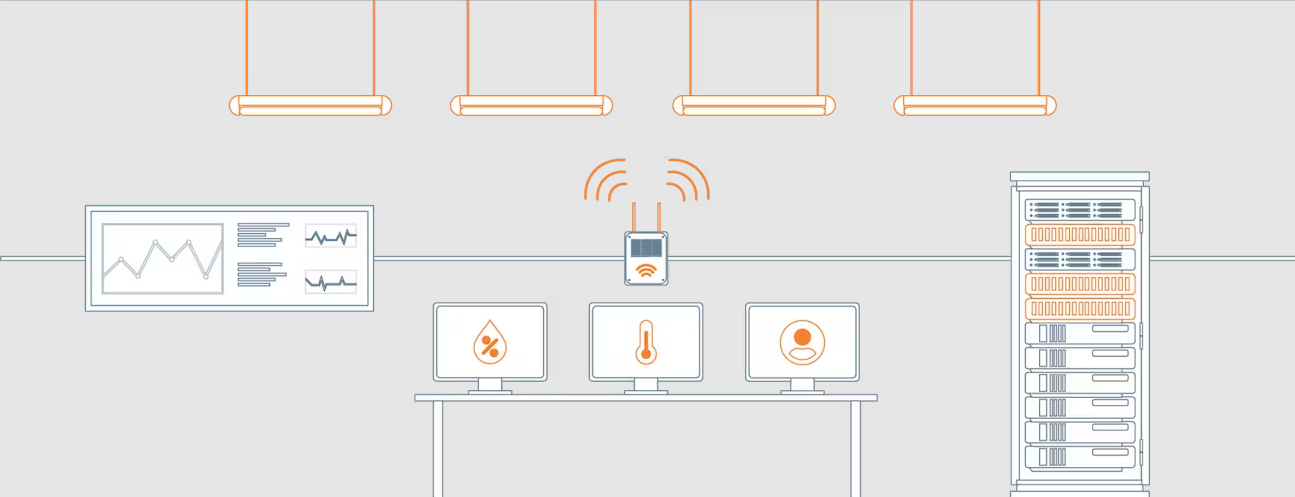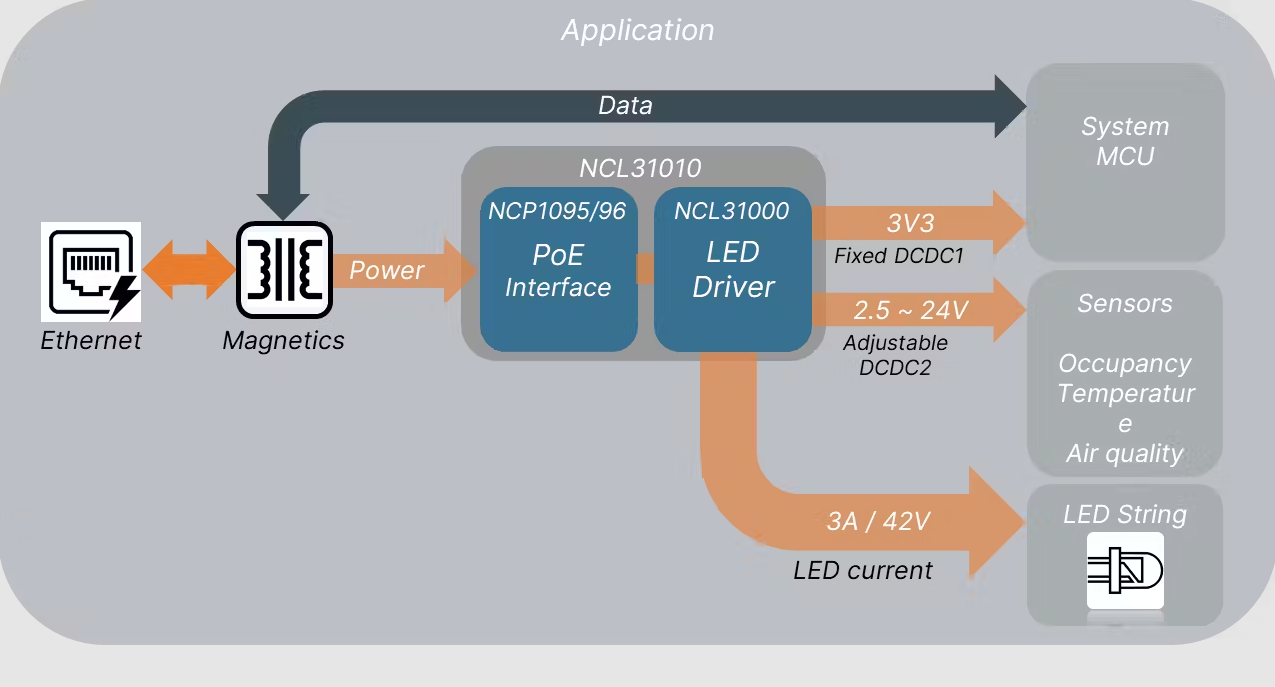Simplify smart buildings with PoE-connected lighting

Simplify smart buildings with PoE-connected lighting
Designers of smart homes, offices and factories are constantly seeking new ways to improve the efficiency of the systems used to deliver and manage building facilities. Historically, data and power networks have been installed separately to each perform distinctly different functions, but this has required the installation of two entirely different cable types in the building structure.
The development of Power over Ethernet (PoE) now provides a way to reduce the need for AC power cables, allowing some devices (such as cameras, phones, wireless routers) to draw power from their data lines. One area that has received more attention as a potential application of PoE is lighting.
In this paper, we examine the role that connected lighting systems can play in the deployment and management of smart building systems, considering the potential relationship between lighting and building automation (Fig. 1). We also review standard approaches to its design and explain how to enable new applications of connected lighting systems while greatly simplifying their design.

1. Smart lighting plays a key role in building automation
Connected Lighting and Building Automation
Once inside a building, whether it's a home, business or industry, lighting is everywhere. Recently, inefficient incandescent and halogen bulbs have been largely replaced by lower-wattage and more efficient LEDs. However, the method of powering the lamps has not changed significantly, and cables are still run where the luminaires will be installed.
Since LEDs require DC power, the luminaire must include an AC-DC transformer and possibly a DC-DC converter to provide the LEDs with the required voltage levels and ultimately the control current. This approach assumes that luminaires are responsible for only one function—lighting—while providing efficient lighting, while completely ignoring the fact that luminaires are ideal for hosting a range of other smart building functions.
The first step to taking advantage of ubiquitous luminaires is providing them with digital connectivity. By digitizing individual luminaires and interconnecting them into a unified system, they can act as a backbone, ideal for hosting IoT applications throughout a building.
In a connected lighting system, each luminaire has a unique IP address, enabling two-way data communication over the building's data network. Connected lighting is an obvious candidate for transmitting IoT data in homes, offices and factories because electrical and data communication networks are already in place. This approach allows connected luminaires to have additional sensor capabilities and a myriad of applications.
By integrating different types of smart sensors (temperature, humidity, proximity, air quality, etc.), connected lighting systems can simultaneously capture data on room occupancy and other environmental indicators throughout a building as an actionable component of a smart building automation system. enter. This information helps optimize spaces, improve operational efficiency, and help maximize comfort within buildings. Information collected about occupant behavior can also be used for energy management.
Implementing a connected lighting system
One way to add digital connectivity to fixtures is to include Wi-Fi radios. However, because wireless RF signals are attenuated to varying degrees, depending on their location and the building materials between them and the nearest access point, it can reduce the speed and reliability of data communications.
A better approach is to provide each light fixture with an Ethernet port. But this would require running Cat5/6 twisted pair cables to each fixture, doubling the amount of wiring (assuming power wiring has been planned), and increasing installation cost and effort.
Ideally, connected lighting should only require a single cable to power the LEDs, cameras, and smart sensors and transmit their bidirectional data to the remote. This will eliminate the need to run separate power cables to each luminaire - a significant advantage. PoE can transmit DC voltage to power devices and network data at the speed of implemented Ethernet standards, making it ideal for this task.
Fully Integrated Solution
PoE-connected luminaires are powered over Ethernet using separate LED driver ICs and PoE interface ICs. Taking a different approach, the NCL31010 developed by onsemi combines these two components in a single package that can be used as the basis for a fully connected and managed lighting system (Figure 2).

2. Onsemi's NCL31010 PoE Interface LED Driver Targets Networked Lighting Systems
The device is PoE compliant (capable of delivering over 90 W of system power) and IEEE802.3bt/at/af certified. Its buck LED driver is 97% efficient and supports high bandwidth, high linearity analog and PWM dimming down to zero current. Spread spectrum techniques help reduce the amount of conducted and radiated EMI.
Two auxiliary DC-DC converters in the device can power microcontrollers and other peripherals such as sensors. Also includes high-accuracy metering and diagnostics for measuring input and output current and voltage, LED or system temperature, DC-DC voltage and current. One application of the device is low data rate visible light communication (VLC). In this application, digital data is modulated onto LED light emitted from a luminaire, which acts as a location beacon in indoor positioning systems such as YellowDot. VLC's modulated data is imperceptible to the human eye.
Future-proof lighting
PoE-based networked lighting provides the most flexible and efficient lighting for all types of future smart buildings, LED luminaires are controlled via data network and powered via data wiring. Through the combined use of sensors, smart luminaires and smart control systems, smart buildings will provide levels of comfort and efficiency that cannot be achieved with traditional lighting. Those managing smart building systems will also enjoy lower costs during construction and once the building is fully occupied and operational.